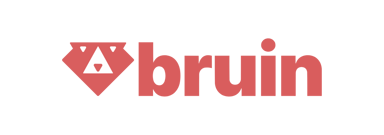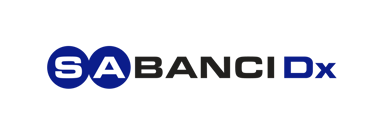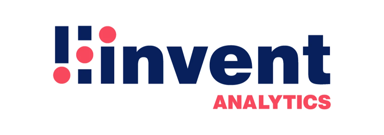Mentoring
Mentoring is one person helping another find their way. Someone with more experience (the mentor) shares what they’ve learned with someone newer to the field (the mentee), offers guidance, support, and wisdom along the way.
It’s not the same as coaching, which is more about fixing specific skills. Mentoring is bigger than that. It’s about growth, both professionally and personally. At its heart, it’s built on trust. A good mentor creates a space where the mentee feels safe to ask questions, make mistakes, and figure things out without fear of judgment.
And the best part? Mentoring isn’t just about the mentee learning. Mentors usually get just as much out of it.
Over time, mentoring has changed. It can be formal or informal, in person or virtual. But no matter how it happens, it is always about real connections, real growth, and people learning from each other. 📌
Why Mentoring in the Workplace Matters
Mentoring is a game changer for employees and companies.👌
Imagine having someone in your corner giving you personalized advice that speeds up your career growth. That's what mentoring does for mentees. It can translate to quicker promotions, better pay, and a real boost in confidence. You'll learn the company's hidden rules, pick up crucial skills faster, and build connections that truly matter.
But it's not a one-way street. Mentors get a lot out of it too. Helping someone else develop sharpens their leadership skills, brings in fresh ideas, and can even rekindle their own enthusiasm for the job. Many mentors say that breaking things down for someone else actually deepens their own understanding and helps them stay sharp.
From a company’s perspective, mentoring is a smart investment. It keeps employees engaged, helps them stick around longer, and builds a strong pipeline of future leaders. Plus, it makes sure that when experienced employees leave, their knowledge and insights stay.
And in today’s job market, mentoring is a huge draw. Younger professionals, in particular, look for companies that offer strong mentorship programs, and employees who feel supported are much less likely to leave.
Types of Workplace Mentoring
There’s no single way to do mentoring. It comes in different styles, each with its own benefits. When HR teams really understand these differences, they can build mentoring programs that actually work for their company and their people. 👇
One-on-One Mentoring
Think of one-on-one mentoring as a dedicated partnership. It's where someone with experience sits down with you, just you, to offer personalized advice. This kind of focused connection fosters real trust, allowing for honest talks about things you might not share otherwise. You get their full attention, which is invaluable.
It's particularly helpful for those on the fast track to leadership, new employees figuring out the company ropes, or anyone facing a big career shift. To make it work, HR needs to set some ground rules: clear matches, training for both sides, and a structure for regular, productive chats. And matching? Don't just look at skills. Think about how people communicate, their personalities, and where they want to go. Getting that right is key.
Many organizations find that thoughtful pairing on the front end prevents relationship breakdowns later, while structured check-ins help both parties stay committed through busy periods. The investment in proper matching pays dividends through deeper engagement and more effective knowledge transfer.
Group Mentoring
Group mentoring is when one mentor works with a group of people at once. It’s a good way to make sure everyone gets guidance, but in a more efficient way where they can learn from both the mentor and each other’s experiences.
It’s super useful when there’s a big need for mentoring, but not enough mentors to go around. This approach works really well for bringing new hires up to speed, supporting different employee groups, or when a team needs to build similar skills.
For it to work, the mentor should be good at keeping things balanced. They should give everyone a chance to talk and make sure the group stays engaged. HR can offer advice on group dynamics, mix people up so there are different perspectives, and set clear goals for each session so everyone knows what to expect.
Peer Mentoring
Peer mentoring is basically when people on the same level with different skills, help each other out. You might be the expert on one thing, and they're the expert on another. You swap roles as needed.
It's great for sharing knowledge between teams, getting new people up to speed, or just building a community around certain skills. It is especially useful if you don’t have those traditional boss-to-employee mentoring setups.
To make it work, you need to match people with complementary skills and give them some structure for those learning sessions. It should be a team effort, not a competition. Give clear expectations about what everyone gets out of it, and what they’re responsible for. It's about growing together, not just one person getting all the advice.
Reverse Mentoring
Reverse mentoring happens when instead of the seasoned boss giving advice to the newcomer, it's flipped. The new employee becomes the mentor and guides the senior leader. Why? Because experience isn't everything. Younger people usually have an idea about what's new like the latest tech and social trends. It's a way to get some fresh perspectives flowing.
It closes the gap between generations, keeps up with digital changes, and encourages new ideas. But for it to work, junior mentors need to feel at ease sharing their thoughts, especially with senior leaders.
You need to make it clear what everyone's supposed to learn, so the junior person's expertise is actually valued. And you need to pay attention to power dynamics.
When done right, reverse mentoring is a win-win. It helps younger employees grow while also giving senior leaders a real look at what’s happening in the workplace. At the end of the day, it’s all about learning from each other, titles and experience aside.
E-Mentoring
E-mentoring is about connecting with mentors online instead of in person. Think of it as super flexible mentoring. Is a mentor across the country? No problem. Schedules a mess? Chat when you want. Need a niche expert you can't find locally? E-mentoring is the answer.
It's perfect for remote teams or tapping into global talent. But you need to pick the right online tools, set up a regular check-in schedule, and make sure you're actually connecting, not just sending emails. HR can help with that and suggest check-in frequency and push for occasional video calls.
E-mentoring is about making mentoring work for you, no matter where you are or how busy you get.
How to Build a Successful Mentorship Program
Building a great mentoring program isn’t about making things complicated, it’s about being thoughtful and setting it up for success. Here’s what really matters 📌:
Start with clear goals. What’s the main goal here? Are you trying to keep employees around longer, grow future leaders, or support diversity efforts? Get specific. When you know exactly what you’re aiming for, it’s much easier to see if it’s working.
Get leadership buy-in early. Many great mentoring programs fizzle out because senior leaders weren't visibly supportive. Find an executive champion who'll advocate for your program and help secure necessary resources.
Create just enough structure to be helpful without being bureaucratic. Provide guidelines on meeting frequency, suggested discussion topics, and relationship duration. Most successful programs run 6-12 months with biweekly or monthly check-ins.
The matching process can make or break your program. Don't just pair people based on job titles. Consider learning styles, personality fit, and specific development needs.
Both mentors and mentees need training, something many programs overlook. Mentors need guidance on effective listening and feedback techniques, while mentees benefit from learning how to drive the relationship and come prepared to meetings.
Keep the program visible with regular check-ins, success stories shared in company communications, and perhaps a midpoint celebration event. To evaluate, combine what people are saying with real data, like promotion rates, retention, and engagement scores.
Technology can help, but don't overcomplicate things. A simple shared document for tracking goals and meeting notes might be sufficient for smaller programs, while larger initiatives might benefit from specialized mentoring software that helps with matching and progress tracking.
Conclusion
Workplaces are always changing, but mentoring is something that remains important. It’s evolving to fit new needs, but the heart of it is connecting people and sharing knowledge. These days, we’re seeing mentoring take on more flexible forms that let people learn and grow in ways that suit them best.
When you make space for these kinds of real connections, you’re not just helping people develop, you’re creating a work culture where knowledge flows, experience is shared, and everyone has the chance to do their best work.
The best mentoring programs are the ones that find that sweet spot, where there’s enough structure to keep things on track, but still plenty of room for honest, personal connections. When done well, mentoring becomes less a discrete program and more simply how your organization operates. It creates a legacy of continuous learning and development that sustains your company far into the future. ⭐️
Get a demo
- Quickly find top candidates with smart application management
- Improve team collaboration using built-in communication and workflows
- Offer a smooth candidate experience to strengthen your employer brand
- Count on 24/7 support for a hassle-free hiring process
- Quickly find top candidates with smart application management
- Improve team collaboration using built-in communication and workflows
- Offer a smooth candidate experience to strengthen your employer brand
- Count on 24/7 support for a hassle-free hiring process
"We truly felt the speed difference. Everything was smoother, and candidate feedback was much more positive. It made our jobs easier."

Trusted by 100+ teams
Get Informed,F.A.Q.
Revolutionize your hiring process with our transformative Applicant Tracking System (ATS.)
Suggested keywords
What is Cultural Fit?
Let's talk numbers - 89% of employers put cultural fit at the top of their hiring checklist. Pretty huge. But wait a second... what exactly does cultural fit mean in today's fast-moving workplace?The ...
Employee NPS Benchmarks
An Employee NPS benchmark is basically a way to see how your company’s employee satisfaction stacks up against others. It helps turn your eNPS score into something useful by giving it context. 📌You'r...
Salary Benchmarking
Salary benchmarking is basically figuring out if what you're paying your team makes sense compared to what others are offering for similar roles. It’s like checking the going rate before you buy somet...
















